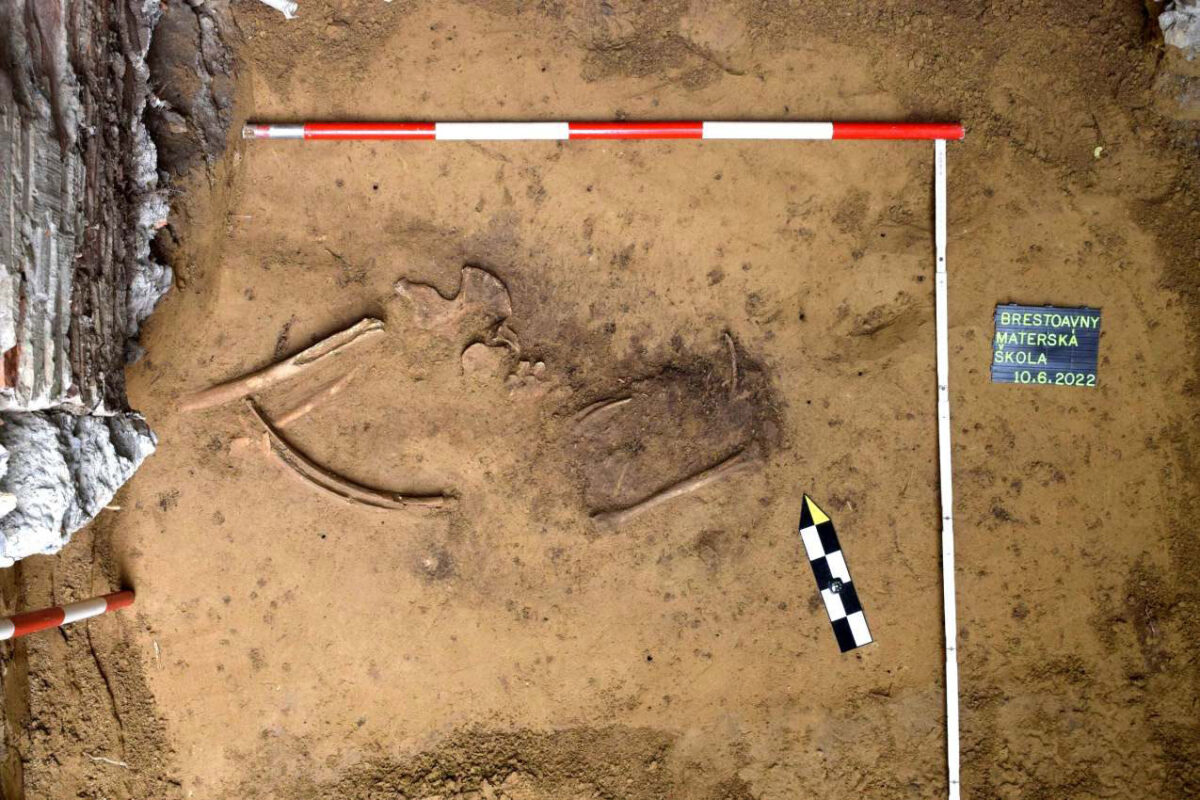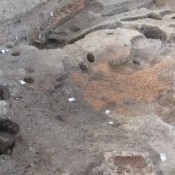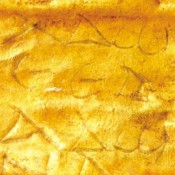During construction works for a kindergarten in Brestovany, workers came across human bones. During the inspection by the staff of the Trnava KPÚ and the West Slovak Museum in Trnava, it came out that the bones belonged to a grave. More detailed research and retrieval of the find followed. The results of these investigations showed that it was a 4,000-year-old grave from the Early Bronze Age containing typical female jewelry such as bone beads, a copper bracelet and two willow-shaped earrings.
The skeleton belonged to a woman buried in a flexed position on her left side. On the basis of the grave goods found and the nature of the grave, the find could be classified in the earlier Bronze Age, specifically the so-called Nitra culture. This is one of the oldest cultures of the Bronze Age in Slovakia, known for the gradual introduction of bronze production, i.e. an alloy of copper and tin.
The uncovering of the grave was witnessed by all the classes of the local elementary school and kindergarten. Thus, the coming to light of the grave turned into a live demonstration of the work of archaeologists and a lecture about the life and customs of our ancestors.
The kindergarten is located in the area of the national cultural monument mansion and park in the cadastral area of Malé Brestovany. The mansion dates from the period of classicism from the first half of the 19th century. Its location on a slight elevation apparently was also attractive as a prehistoric settlement.





